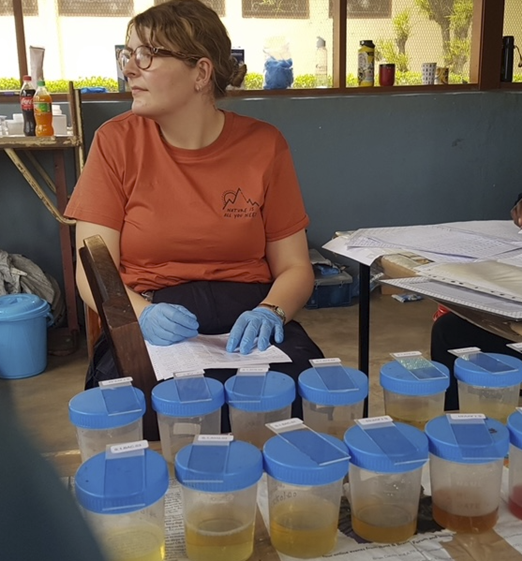
Earlier this year I was invited on the HUGS first annual human cohort follow up in Mangochi, Malawi. Forming part of the Dagnall Laboratory teaching team here at LSTM, I help educate students in vector biology, parasitology and laboratory skills. Bridging the gap between research and education staff is vitally important for supplying high quality teaching, providing hands on field experience and an opportunity to collect teaching samples. Historically, members of the Dagnall team had joined research field trips, however this had sadly fallen aside over the last 5 years or so. After discussions with Dr James LaCourse it was decided that the HUGS summer study would provide an ideal opportunity to re-start these education/research collaborations.
The main aims of me joining the team were to:
- Help the HUGS team achieve their goal – another pair of hands is always welcome.
- Improve understanding of field techniques in a field environment – although I teach many techniques used in the field, I had no previous experience of carrying them out in a low resource setting. My understanding of the challenges this may present was therefore lacking.
- Authenticate my teaching – students strongly value field experience in staff and are always keen to hear stories of past work.
- Supporting Students – Four LSTM students were present on this assignment – coming from the Education Department I was available to offer an extra avenue of support.
- Collect teaching samples – The Dagnall Laboratory is constantly using diagnostic materials to teach microscopy and vector biology to students. Opportunities for educational sample collection could be identified for future use.
On arrival at the study sight in Mangochi I was soon put to work and managed to be involved in the vast majority of activities throughout the study. A field lab is incredibly different to a clean purpose-built laboratory, so there were many learning opportunities and chances to be creative when coming up with pragmatic solutions. James and I also had the opportunity to collect video footage of a community health centre for the immersive suite at LSTM. The suite provides our students with an amazing opportunity to immerse themselves (as much as possible) in the environments they may work in after their studies. This new footage would go a long way in engaging future global health professionals. Having been just over a year since I was involved in research, it was an absolute joy for me to be part of a team contributing to discoveries and achieving goals. I really loved getting stuck into the tasks and experiencing new environments.
Overall, this trip was incredibly valuable to me on both a personal and professional level. It also clearly demonstrated how important the link between education and research is. Education should always be informed and in line with current research. Giving education staff the opportunity to go out to the hard edge of the surveillance not only improves the knowledge of the educator but also the quality of teaching provided by them. Students greatly value true experiences and stories from the field as it allows them to better grasp what they themselves might experience when working in resource poor settings. Thanks to my participation in the study, I now feel better equipped to provide well rounded teaching, built upon personal experience and knowledge. Malawi is such a beautiful country filled with vibrancy, amazing people and culture – it was a privilege to visit.
Lastly, I’d like to thank the HUGS team for allowing me to join them on this study.